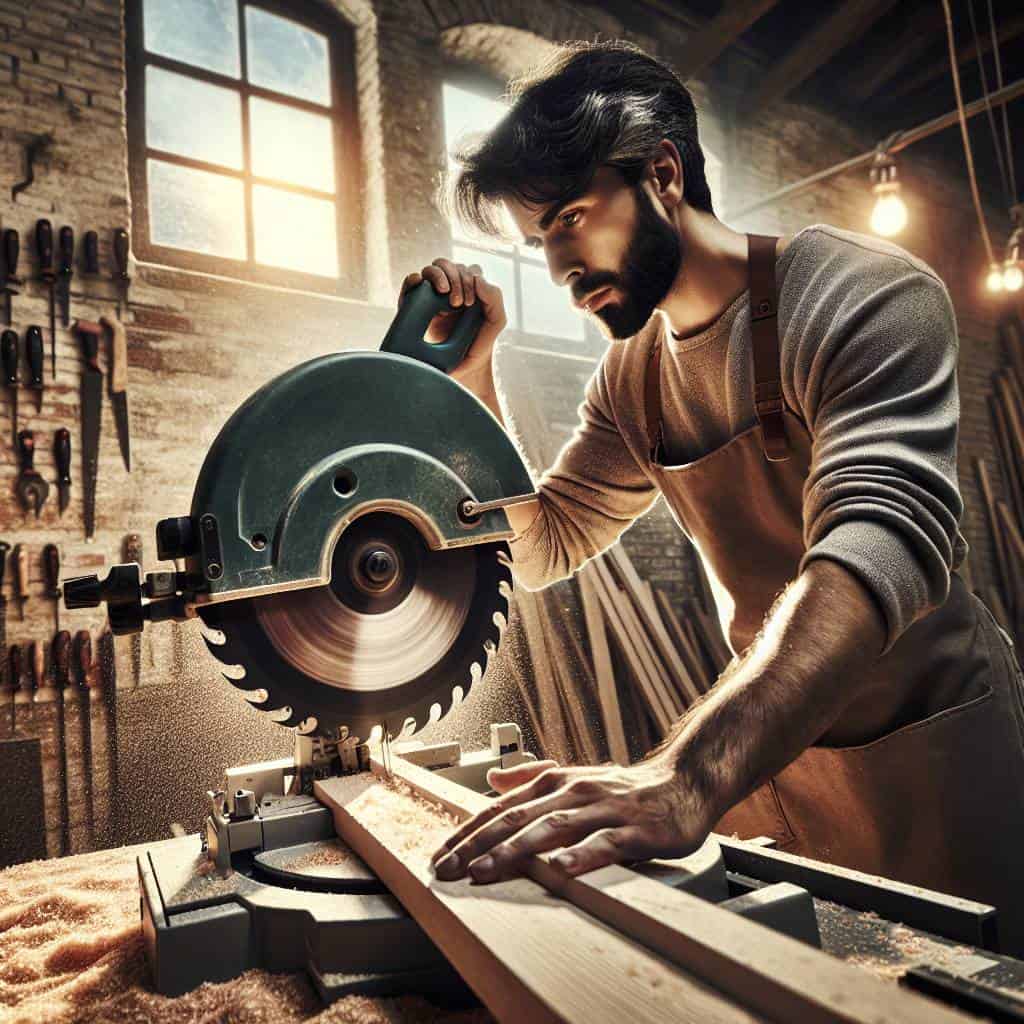You know, the first time I picked up a miter saw, I was convinced I could teach myself how to use it. I mean, how hard could it be? Just a spinning blade and some wood, right? Well, let’s just say that the result was less “master craftsman” and more “who let the toddler play with power tools?” My cuts were about as straight as a politician’s promise, and I had more near-misses than I’d care to admit. But, like any good mechanic who’s had a wrench slip more than once, I learned the hard way and lived to tell the tale.

Now, I’m here to help you avoid turning your workshop into a scene from a horror movie. This isn’t just about measuring twice and cutting once. We’re diving into the nuts and bolts of making accurate cuts, nailing those angles, and getting your bevels just right. And yeah, we’ll talk safety—because I don’t want you explaining to your friends why you’ve got more bandaged fingers than working ones. Buckle up, because we’re about to get hands-on with some real-deal advice that’ll have you turning heads (and wood) before you know it.
Table of Contents
Why My First Attempt at Accurate Cuts Was a Comedy of Errors
There I was, staring down the miter saw like it was some ancient beast guarding the secrets of the universe. I’d heard tales of folks who could slice wood with precision so fine, you’d think they were slicing through butter. But my first attempt? Let’s just say it was more like hacking away at a piece of firewood with a rusty ax. I’d set out to conquer those perfect 45-degree angles, but instead, I ended up with pieces that looked like they’d been chewed on by a particularly aggressive beaver. My cuts were off, my angles were laughable, and my pride? Well, it was nowhere to be found.
You see, the whole ordeal was a masterclass in how not to use a miter saw. I had the safety goggles on and my fingers far from the blade—at least I got that part right. But the rest? A comedy of errors. I’d forgotten to double-check the bevel settings, and my measurements were more of a rough estimate than anything you’d call precise. Instead of sliding smoothly, the wood bucked and jittered under my hands like a bull at a rodeo. I learned the hard way that making accurate cuts isn’t just about aiming for the right line. It’s about understanding the tool, respecting its quirks, and maybe, just maybe, taking the time to read the manual instead of winging it like some DIY cowboy.
Looking back, it’s clear my overconfidence was my downfall. I thought I could just eyeball it, trust my gut. But the miter saw is a demanding partner—it requires patience and precision. I’ve since learned that each cut is a dance between angle and bevel, where safety is the steadfast drummer keeping time. And if you don’t want your project to end up as firewood, you’ve got to listen to that rhythm, measure twice, and cut once. Or, in my case, measure three times and pray the wood gods are feeling generous.
The Right Cut: More Than Just Angles
Using a miter saw is like tuning an old engine—precision isn’t optional. If your angles aren’t spot-on, you might as well trade your saw for a hammer and call it a day.
Cutting Through the Noise: My Miter Saw Epiphany
When I first grabbed that miter saw, I was convinced it was just another tool in my arsenal. But this little beast taught me a thing or two about precision I never expected. It’s not just about lining up angles and hoping for the best—it’s a dance of angles and bevels, a puzzle where each piece demands your full attention. And yes, I’ve had my fair share of pieces that ended up looking more like modern art than the clean cuts I was aiming for. But each mistake was a lesson, a chance to get my hands dirty and figure out why things didn’t line up as planned.
It’s funny how a tool can remind you of life’s quirks. The miter saw has become a sort of mentor in my workshop, nudging me towards patience and respect for the process. The thrill of making that perfect cut—it’s like hearing an engine purr after a long overhaul. It’s not just about safety tips or techniques; it’s about finding the soul in the work. So next time I fire it up, I’ll remember these hard-learned lessons. Because in the end, it’s not just wood I’m shaping—it’s my own path, one precise cut at a time.